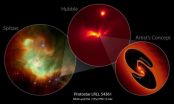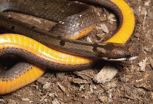(Press-News.org) Work-related stress is not linked to the development of colorectal, lung, breast or prostate cancers, a study published today on bmj.com suggests.
Around 90% of cancers are linked to environmental exposures and whilst some exposures are well recognised (such as UV radiation and tobacco smoke), others are not (psychological factors such as stress).
Stress can cause chronic inflammation which has been shown to have various roles in the development of cancer, plus stressed individuals are more likely to smoke, consume excessive amounts of alcohol and be obese – all of which are cancer risk factors.
So far, only a few studies have examined the associations between work-related stress and cancer risk. These also had unclear conclusions.
Researchers from the IPD-Work Consortium, led by the Finnish Institute of Occupational Health and University College London therefore carried out a meta-analysis of 12 studies involving 116,000 participants aged 17 to 70, from Finland, France, the Netherlands, Sweden, Denmark, and the UK.
Psychological stress at work was assessed using a validated measure, job strain. Job strain was categorised into: high strain job (high demands and low control), active job (high demands and high control), passive job (low demands and low control) and low strain job (low demands and high control).
Data on cancer events were obtained from national cancer or death registries and hospitalisation registries.
Rates were adjusted for age, sex, socioeconomic position, BMI, smoking and alcohol intake. Those with a BMI under 15 or over 50 were excluded from the study.
Results showed that 5,765 out of 116,056 (5%) participants developed some form of cancer in the average 12 year follow-up. Researchers found no evidence of an association between job strain and overall cancer risk. They suggest that many of the previously reported associations may have been chance findings or influenced by possible unmeasured common causes of stress and cancer, for example shift work.
Researchers conclude that the meta-analysis provided "no evidence for an association between job strain and overall cancer risk" suggesting that work-related psychological stress is unlikely to be an important factor for cancer. And although reducing work stress would improve the well-being of the general population, it is unlikely to have a marked impact on cancer burden at population-level.
###
Research: Work stress and risk of cancer: meta-analysis of 5700 incident cancer events in 116000 European men and women. END
Stress at work very unlikely to cause cancer
But can cause other contributing factors
2013-02-08
ELSE PRESS RELEASES FROM THIS DATE:
43 percent reduction in deaths from paracetamol due to smaller pack sizes
2013-02-08
Research: Long term effect of reduced pack sizes of paracetamol on poisoning deaths and liver transplant activity in England and Wales: interrupted time series analysis
The number of deaths and liver transplants due to paracetamol overdoses has significantly reduced thanks to UK legislation to make pack sizes smaller, a paper published today on bmj.com suggests.
Paracetamol overdoses are a common method of suicide and frequent cause of liver damage. In September 1998, a new legislation was introduced by the UK Government which restricted pack sizes to a maximum of ...
UF researchers include humans in most comprehensive tree of life to date
2013-02-08
GAINESVILLE, Fla. --- An international team of scientists including University of Florida researchers has generated the most comprehensive tree of life to date on placental mammals, which are those bearing live young, including bats, rodents, whales and humans.
Appearing Thursday in the journal Science, the study details how researchers used both genetic and physical traits to reconstruct the common ancestor of placental mammals, the creature that gave rise to many mammals alive today. The data show that contrary to a commonly held theory, the group diversified after ...
New study highlights Chagas disease as a growing health and socio-economic challenge
2013-02-08
WASHINGON, D.C.—February 7, 2013—Today, The Lancet Infectious Diseases published a new report that examines the global economic burden of Chagas disease. In the first study of its kind, researchers measured the health and economic impact of Chagas disease and found that the total economic burden of Chagas disease matches or exceeds that of many more well-known diseases such as rotavirus, Lyme disease and cervical cancer.
Chagas disease infects an estimated 10 million people worldwide, with most cases occurring in Latin America. It is a parasitic infection transmitted ...
For drug makers, new 3-D control opens wealth of options
2013-02-08
New Haven, Conn.— A team of scientists anchored at Yale University has demonstrated a new, highly versatile approach for quickly assembling drug-like compounds, establishing a broad new route to drug discovery and medical treatment. They report their results in the journal Science on Feb 8.
Drug molecules interact with their targets, such as proteins or enzymes, by attaching to them in a way that neutralizes the target's undesirable effects in the body. This is sometimes called the "lock-and-key" method. The new approach offers scientists far greater control over the ...
Hubble captures strobe flashes from a young star
2013-02-08
The cause of the fireworks seen in this Hubble image and video is hidden behind a dense disc and envelope of dust. However, astronomers think that the strobe effect is due to periodic interactions between two newly-formed stars that are gravitationally bound to each other.
These two stars drag material inwards from a surrounding disc of gas and dust. Astronomers propose that the light flashes seen in this video are due to this material suddenly being dumped onto the growing stars as they near one another in their orbits, unleashing a blast of radiation.
"The protostar ...
Hastings Center resources chart progress in debate over medical research with animals
2013-02-08
The scientific and ethical debate over the use of animals in medical research has raged for years, but perspectives are shifting, viewpoints are becoming more nuanced, and new initiatives are seeking alternatives to animal testing, according to a special report by The Hastings Center, "Animal Research Ethics: Evolving Views and Practices." The report is available on a new Web site, animalresearch.thehastingscenter.org, a hub of educational information that defines and interprets this changing landscape.
These resources are the outcome of a project on the ethics of medical ...
Excess protein linked to development of Parkinson's disease
2013-02-08
Researchers at the University of California, San Diego School of Medicine say overexpression of a protein called alpha-synuclein appears to disrupt vital recycling processes in neurons, starting with the terminal extensions of neurons and working its way back to the cells' center, with the potential consequence of progressive degeneration and eventual cell death.
The findings, published in the February 6, 2013 issue of the Journal of Neuroscience, have major implications for more fully understanding the causes and mechanisms of Parkinson's disease (PD), a neurodegenerative ...
NASA telescopes discover strobe-like flashes in a suspected binary protostar
2013-02-08
VIDEO:
This video, created from a sequence of images from the Hubble Space Telescope, shows a pulse of light emanating from the protostellar object LRLL 54361. Most if not all of...
Click here for more information.
Two of NASA's great observatories, the Spitzer and Hubble space telescopes, have teamed up to uncover a mysterious infant star that behaves like a strobe light.
Every 25.34 days, the object, designated LRLL 54361, unleashes a burst of light. Although a similar ...
The amazing amphibians and reptiles of the Philippine island Luzon
2013-02-08
A recent study of the amphibians and reptiles of Sierra Madre Mountain Range, northeastern Luzon, reveals a preliminary enumeration of more than 100 species that contribute to the unique biodiversity of the region. At present, the Luzon region's herpetological range stands at more than 150 species. Out of these, a total of 49 amphibian species have been documented, 44 of which are native and a remarkable 32 endemic. In the world of reptiles, Luzon can boast with 106 native species, 76 of which are unique to this region.
The catalogue published in the open access journal ...
Colon cancer exhibits a corresponding epigenetic pattern in mice and humans
2013-02-08
Tumourigenesis is driven by genetic alterations and by changes in the epigenome, for instance by the addition of methyl groups to cytosine bases in the DNA. A deeper understanding of the interaction between the genetic and epigenetic mechanisms is critical for the selection of tumour biomarkers and for the future development of therapies. Human tumour specimens and cell lines however contain a plethora of genetic and epigenetic changes, which complicate data analysis. In contrast, certain mouse tumour models contain only a single genetic mutation and allow the analysis ...
LAST 30 PRESS RELEASES:
Norbert Holtkamp appointed director of Fermi National Accelerator Laboratory
New agentic AI platform accelerates advanced optics design
Biologists discover neurons use physical signals — not electricity — to stabilize communication
Researchers discover that a hormone can access the brain by hitchhiking
University of Oklahoma researcher awarded funding to pursue AI-powered material design
Exploring how the visual system recovers following injury
Support for parents with infants at pediatric check-ups leads to better reading and math skills in elementary school
Kids’ behavioral health is a growing share of family health costs
Day & night: Cancer disrupts the brain’s natural rhythm
COVID-19 vaccination significantly reduces risk to pregnant women and baby
The role of vaccination in maternal and perinatal outcomes associated with COVID-19 in pregnancy
Mayo Clinic smartwatch system helps parents shorten and defuse children's severe tantrums early
Behavioral health spending spikes to 40% of all children’s health expenditures, nearly doubling in a decade
Digital cognitive behavioral treatment for generalized anxiety disorder
Expenditures for pediatric behavioral health care over time and estimated family financial burden
Air conditioning in nursing homes and mortality during extreme heat
The Alps to lose a record number of glaciers in the next decade
What makes a good proton conductor?
New science reporting guide published for journalists in Bulgaria
New international study reveals major survival gaps among children with cancer
New science reporting guide published for journalists in Turkey
Scientists develop a smarter mRNA therapy that knows which cells to target
Neuroanatomy-informed brain–machine hybrid intelligence for robust acoustic target detection
Eight SwRI hydrogen projects funded by ENERGYWERX
The Lundquist Institute and its start-up company Vitalex Biosciences Announces Strategic Advancement of Second-Generation fungal Vaccine VXV-01 through Phase 1 Trials under $40 Million Competitive Con
Fine particles in pollution are associated with early signs of autoimmune disease
Review article | Towards a Global Ground-Based Earth Observatory (GGBEO): Leveraging existing systems and networks
Penn and UMich create world’s smallest programmable, autonomous robots
Cleveland researchers launch first major study to address ‘hidden performance killer’ in athletes
To connect across politics, try saying what you oppose
[Press-News.org] Stress at work very unlikely to cause cancerBut can cause other contributing factors




